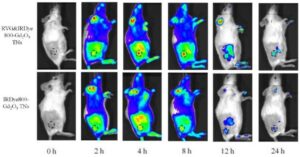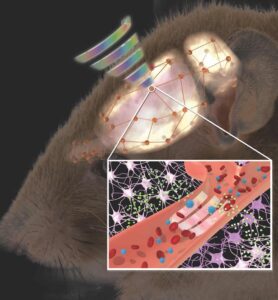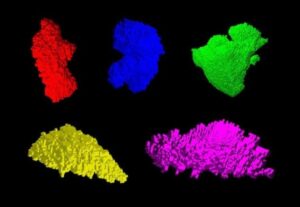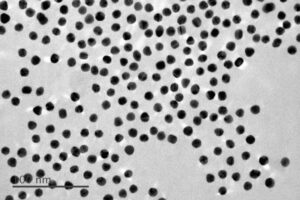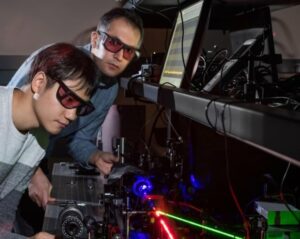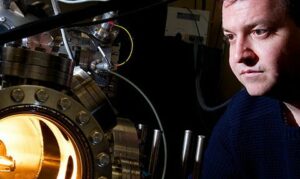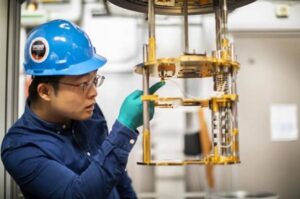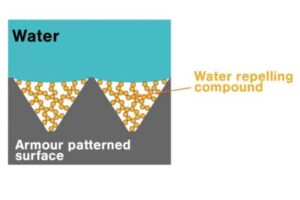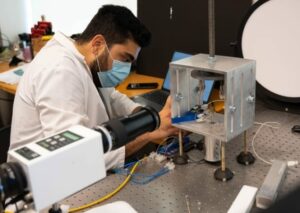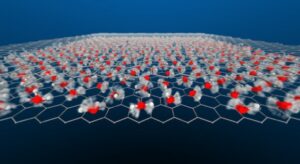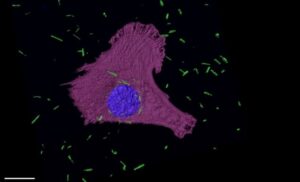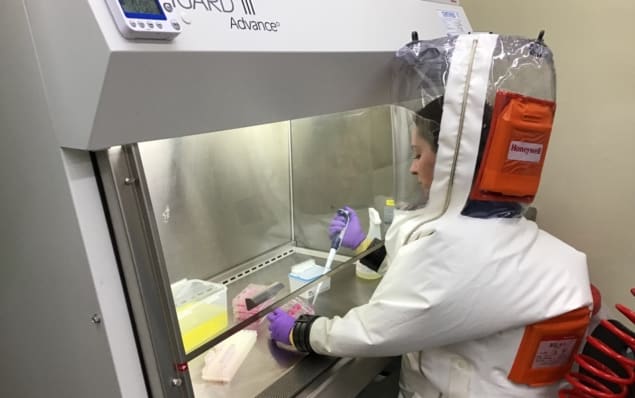
The research community around the world has never been more engaged in developing treatments for a new disease than it has for COVID-19. The Liangfang Zhang research group at the University of California San Diego, working in collaboration with the Anthony Griffiths research group from Boston University School of Medicine, is no exception.
Reporting their findings in Nanoletters, the research teams have jointly demonstrated a unique approach that might stop SARS-CoV-2, the COVID-19 virus, from infecting human cells.
Cellular decoys
The researchers have developed two types of cellular nanosponge that bind to SARS-CoV-2 before it can enter human cells. These nanosponges consist of polymeric nanoparticles covered with membranes from one of the two human cell types that are known to be invaded by the virus, namely lung epithelial cells and macrophages. This means that the surfaces of the nanoparticles feature the exact same receptors and proteins that the virus would normally bind to. In a sense, the nanosponges act as cellular decoys by mimicking human cells and therefore offering alternative binding sites to SARS-CoV-2.
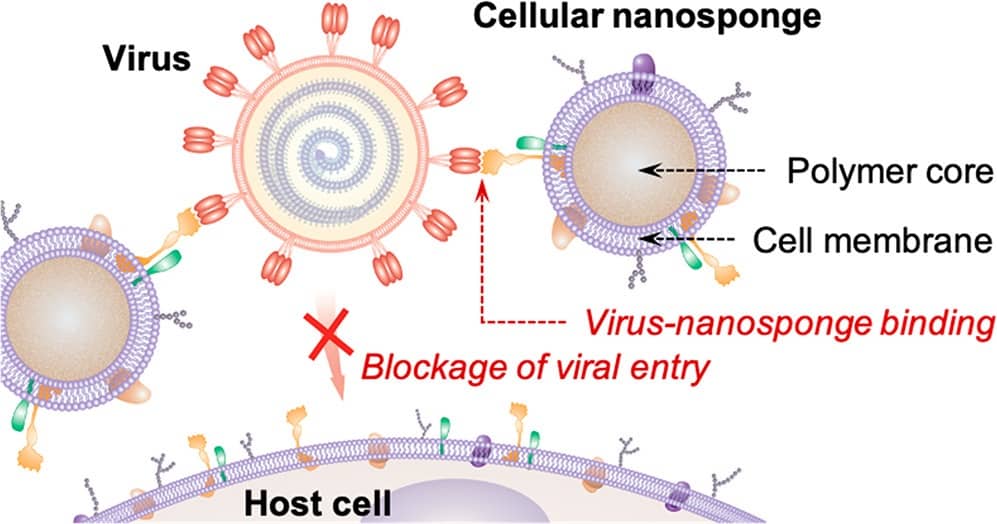
The key idea is to deploy many of these nanosponges, so that they can surround the virus, effectively soaking it up before it can enter any host cell. And if the virus cannot enter a cell, it cannot replicate and is neutralized, therefore preventing the spread of the infection to the rest of the body.
The researchers first tested the preliminary safety of the fabricated nanosponges in mouse models. They found that a 3-day exposure to both types of nanosponge did not damage the animals’ lung tissue. In addition, blood markers as well as platelets, red and white blood cell counts were not negatively affected, therefore ruling out any short-term toxic effects.
Next, the team tested the efficacy of the nanosponges in vitro, by exposing monkey cell cultures to the virus in the presence of the nanosponges. Both types of nanosponge reduced the infectivity of SARS-CoV-2 in a dose-dependent manner, with the best result leading to a reduction of up to 90% compared with non-treated cultures.
A treatment for COVID-19?
These nanosponges might represent a unique solution to the race for a treatment of COVID-19. They are relatively easy to fabricate, and come with the added benefit of being insensitive to viral mutations and potentially applicable to other types of coronavirus.
“Because the cellular nanosponges are not targeting a specific virus, as other drugs normally do, these sponges are potentially agnostic to viral mutations and viral species. As long as the virus still attacks human lung epithelial cells or human macrophages, these nanosponges can bind to the virus and neutralize it,” says senior author Liangfang Zhang.
Zhang adds that the team is now focused on testing the efficacy of these nanosponges in appropriate animal models of COVID-19. If the data are positive, they will advance the nanosponges towards human clinical trials.
- SEO Powered Content & PR Distribution. Get Amplified Today.
- EVM Finance. Unified Interface for Decentralized Finance. Access Here.
- Quantum Media Group. IR/PR Amplified. Access Here.
- PlatoAiStream. Web3 Data Intelligence. Knowledge Amplified. Access Here.
- Source: https://physicsworld.com/a/cellular-nanosponges-could-neutralize-sars-cov-2/
- :has
- :is
- :not
- $UP
- 10
- a
- Act
- added
- addition
- Adds
- advance
- alternative
- and
- animal
- anna
- any
- applicable
- approach
- appropriate
- ARE
- around
- AS
- At
- Attacks
- author
- BE
- been
- before
- being
- benefit
- BEST
- bind
- binding
- blood
- body
- boston
- Boston University
- both
- by
- california
- CAN
- cannot
- cell
- Cells
- cellular
- click
- Clinical
- clinical trials
- collaboration
- come
- community
- compared
- conducts
- Coronavirus
- could
- covered
- COVID-19
- damage
- data
- demonstrated
- deploy
- developed
- developing
- DID
- Disease
- diseases
- do
- Drugs
- easy
- effectively
- effects
- efficacy
- emerging
- engaged
- Enter
- exception
- Exposure
- Feature
- findings
- First
- focused
- For
- found
- from
- Have
- host
- http
- HTTPS
- human
- idea
- if
- image
- in
- infection
- Infectious diseases
- information
- issue
- IT
- jpg
- Key
- known
- lab
- leading
- Long
- macrophages
- manner
- many
- max-width
- means
- might
- models
- more
- namely
- National
- negatively
- never
- New
- no
- normally
- now
- of
- offering
- on
- ONE
- open
- or
- Other
- out
- Physics
- Physics World
- plato
- Plato Data Intelligence
- PlatoData
- positive
- potentially
- presence
- preventing
- principle
- Proteins
- Race
- Red
- Reduced
- reduction
- relatively
- represent
- research
- Research Community
- researcher
- researchers
- REST
- result
- ruling
- s
- Safety
- same
- San
- SARS-CoV-2
- says
- School
- senior
- sense
- short-term
- Sites
- So
- solution
- specific
- spread
- Still
- Stop
- surrounded
- targeting
- team
- teams
- tested
- Testing
- tests
- than
- that
- The
- the world
- their
- therefore
- These
- they
- this
- thumbnail
- to
- towards
- treatment
- treatments
- trials
- true
- two
- types
- unique
- university
- viral
- virus
- WELL
- were
- white
- will
- with
- working
- world
- would
- zephyrnet

